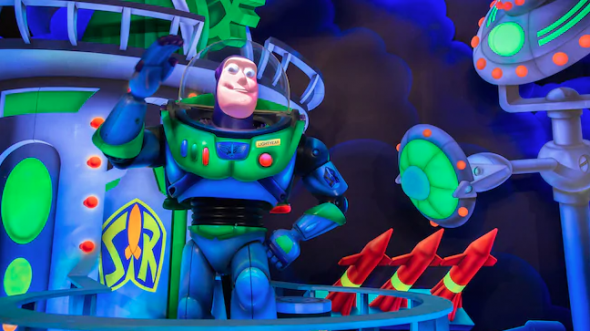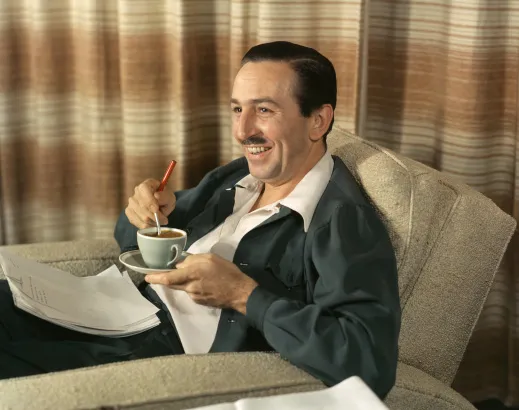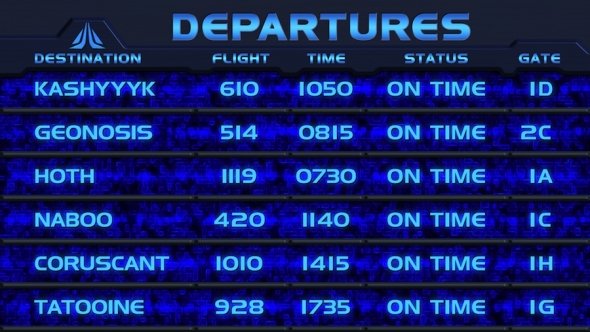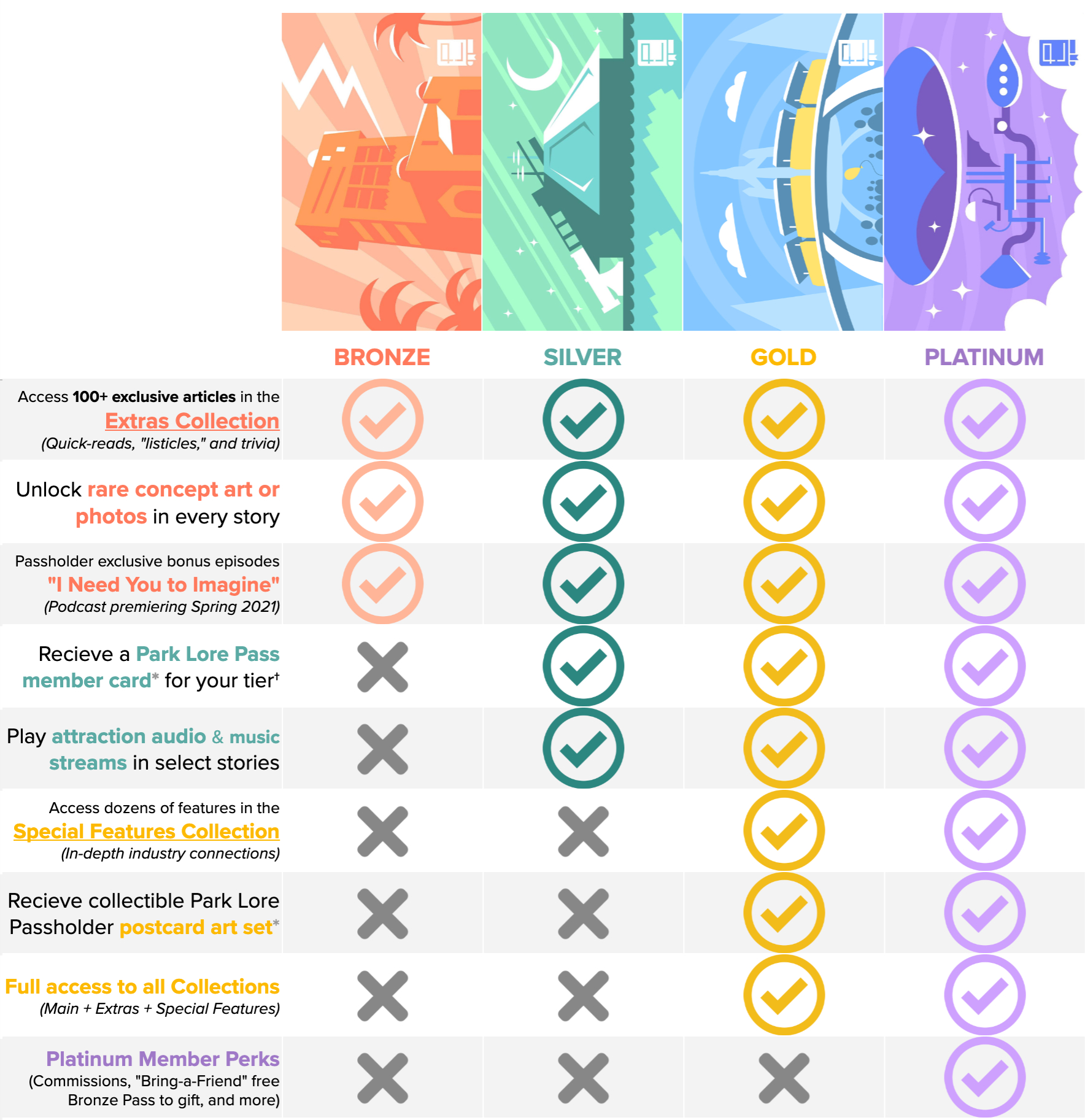Safety, courtesy, show, and efficiency. Any Disney Cast Member can recite these Four Keys to exceptional guest service… And while the first three are deeply tied to Disney’s identity, the last – efficiency – is certainly not least. An estimated 60,000 people per day visit Magic Kingdom, and at some point, you’re likely to end up at the back of a line behind many of them. That’s when a very important number – capacity – matters.
6 Pairs of “Cloned” Disney Attractions You May Never Have Noticed Are Nearly Identical!
If you think cloning is a divisive topic in the fields of genetics and biology, you haven’t broached the subject with theme park fans! In fact, what theme park enthusiasts call “cloning” has a long and storied past with Disney Parks, at least dating back to the design of Magic Kingdom. There, many of Disneyland’s classics were merely “copied and pasted,” albeit in entirely new contexts and often with the kinds of minor (and sometimes major) changes dictated by hindsight and budgets.
Today, cloning is a touchy subject because – by and large – Imagineering fans are torn between two extremes. In short, everyone wants “their” resort to keep its coolest rides exclusive, but to get the coolest rides from every other resort! It’s why Disneyland fans bristle at the thought of Cars Land being “soullessly copied” to Florida, but relish in recieving Runaway Railway; why Disney World loyalists would sooner die than see Pandora plopped down in California, but really, really want Indiana Jones Adventure.

For today’s Imagineers, “cloning” takes many forms. Often, it involves multiple parks sharing research and development costs to set functionally-identical rides down into several resorts at once. Even then, by the way, they may still be presented very differently, attuned to their location in each park. (Look at Toy Story Mania, STAR TOURS, Web-Slingers: A Spider-Man Adventure, and Little Mermaid dark rides.)
Sometimes, cloning is kicked off when a ride is a surprise hit, spreading one-by-one to other resorts who want a piece of the pie. (See, Big Thunder Mountain, Remy’s Ratatouille Adventure, Soarin’, or Frozen Ever After).

Adding to the confusion, sometimes rides that are clones aren’t really clones at all (like how almost every Disneyland-style park has a Buzz Lightyear dark ride and a Winnie the Pooh dark ride, but none are actually identical to each other).
And even when attractions are “cloned,” they’re very rarely clones at all (though maybe it’s a little too nuanced to point out how Star Wars: Galaxy’s Edge was painted entirely differently in Orlando to compensate for Floridian sun.)
In other words, all “cloning” is not equal. But one of the strangest “clone” relationships you’ll find in Disney Parks are clones that most guests – even those who’ve ridden both – would never think are duplicates. Below are six pairs of attractions that are practically identical on the inside but so different on the outside, you may not even notice it. Though these rides technically are (more or less) bolt-for-bolt duplicates of one another, their dressings make these clones disguised in plain sight…
Coffeeland: 9 Ways Disney and Universal’s Theme Parks Disguise Starbucks in Plain Sight
If you were to ask his friends and family what Walt Disney was, you might get any number of answers: an animator; an artist; a dreamer; an optimist; a futurist… But that’s not all…
According to the fantastic Eat Like Walt by Marcy Carriker Smothers, Walt was also a restauranteur – a man experimenting right at the height of mid-century middle class American dining, introducing the idea that food and fun could go together; that food was full of color and fantasy; that food could be an integral part of the story of each of Disneyland’s themed areas.

However, there was one area where even Walt wasn’t willing to mess around: coffee. As the story goes, Walt decreed back in 1955 that Disneyland would always offer a cup of coffee for ten-cents and not a penny more. And in fact, coffee in the park did cost only a dime until Walt’s death in 1966. Those days, of course, are long gone…
Continue reading “Coffeeland: 9 Ways Disney and Universal’s Theme Parks Disguise Starbucks in Plain Sight”Off The Rails: 13 Totally Trackless Dark Rides from Worst to Best
For the better part of a century, designers have been racing toward the next best thing in ride system technology… From simple carts powered by electric bus-bars, to high-capacity boat-based dark rides; from the continuously-moving Omnimover to the debut of Disney’s Enhanced Motion Vehicle (EMV) in 1995 that makes guests the center of the action… At each step of the way, evolutions in ride system technology have changed the ways that designers can tell stories.
But when we looked at the Seven Modern Wonders of the Theme Park World, one cutting edge technology stands out as the way of the future: rides untethered by tracks entirely. A new generation of trackless rides allow vehicles to do what once seemed impossible: to make choices; to diverge down new paths; to spin and dance around one another in precisely-calibrated near-collisions; to become alive.
From Atom to Zurg: 10 Microscopic Ways Imagineers Have Made Guests SHRINK
Disney Parks are big places. In the shadow of Cinderella Castle, Spaceship Earth, Grizzly Peak, or the Tree of Life, it’s only natural that guests might begin to feel small. But some Imagineering experiences around the globe take that to the extreme!
In fact, it may feel that a day at a Disney Park simply isn’t complete without suddenly becoming the size of a toy, rat, or ant at least once. But just how small can you get? Join us as we progressively shrink down through ten miniaturizing Disney Parks attractions that make guests smaller, and smaller, and smaller. Which of these attractions succeed most at transporting guests to an oversized world? We’ll leave that for you to decide… Just let us know your thoughts in the comments below!
Artificial Worlds: The Rise and Reign of Screens and Simulators at Theme Parks
Back in the first half of the 20th century, the business of entertainment was quite a bit different. Back then, mere “amusement” was enough to draw people to leisure gardens, carnivals and traveling fairs, seaside boardwalks speckled with thrill rides, and rudimentary roller coaster parks. But when Disneyland opened in 1955, entertainment changed.
After being swept up into its “worlds of yesterday, tomorrow, and fantasy” – immersive, cinematic lands built not by carnies, but by filmmakers – guests began to have one simple, timeless, reverberating request: “take me somewhere.” And in the decades since, designers have chased that very idea, looking for increasingly elaborate ways to make guests feel as if they’ve become part of another world, from Peter Pan’s Flight to Pirates of the Caribbean; Haunted Mansion to Indiana Jones Adventure…
But there’s only one kind of attraction that can take guests somewhere without really going anywhere at all: simulators. Today, a growing chorus of critics say that Disney and its contemporaries may rely too much on the transportational power of these increasingly-elaborate attractions, and in an age where guests are increasingly surrounded in screens at home, legitimate questions must be raised: is it time to sideline the simulator? Can physical sets ever make a comeback in the digital age? Or has the reign of these technological giants just begun? Let’s start at the almost-beginning…
STAR TOURS – The Intergalactic E-Ticket Simulator That Changed Disney Parks Forever
A long time ago, in a galaxy far, far away…
Once in a while, an attraction comes around and the entire industry seems to pivot. Landmark rides shift the consciousness at Imagineering and its peers, enabling parks to see new technologies, new storytelling techniques, and new direction firsthand. Groundbreaking, beloved, and known by generations, these sensational headliners start as must-sees and become legends… or in this case, a Lost Legend.

A long time ago indeed, one such ride reshaped Disney Parks from the ground up. STAR TOURS was more than just a cutting edge E-Ticket thrill ride sending guests on a wayward trip to Endor, it was a reinvention of the formula; an intentional test to experiment with a new way of doing things at Disney Parks; the debut of a never-before-seen ride system that would redefine thrill rides. While you probably already know the ending, you won’t believe the story that gets us there…
And before we head off, remember that you can unlock rare concept art and audio streams in this story, access over 100 Extra Features, and recieve an annual Membership card and postcard art set in the mail by supporting this clickbait-free, in-depth, ad-free theme park storytelling site for as little as $2 / month! Become a Park Lore Member to join the story! Until then, let’s start at the beginning…
Star Tours announces the boarding of the Endor Express, non-stop Starspeeder service to the moon of Endor. All passengers please prepare for immediate boarding.
Continue reading “STAR TOURS – The Intergalactic E-Ticket Simulator That Changed Disney Parks Forever”Lost Lands: 12 Areas Axed from Disney and Universal Parks (and What Replaced Them)
Year after year, it seems that more and more classic attractions and beloved fan-favorite rides enter our Lost Legends collection, replaced by hotter, fresher, and newer stories. In fact, fans have gotten used to saying goodbye to rides.
But throughout the history of Disney and Universal’s theme parks, there have also been rare times when entire themed lands disappear off the map – literally. Today, we’re collecting a list of twelve lost lands you may remember. In fact, you may have even stepped foot in these axed areas! Some of these replacements may be obvious improvements… Others may make you wish for a time machine to experience the classics of yesteryear one more time.
Continue reading “Lost Lands: 12 Areas Axed from Disney and Universal Parks (and What Replaced Them)”ICONS: The 12 Centerpiece Structures of Disney and Universal Parks
They’re iconic for a reason. They inspire breathless wonder. They’re orienting navigational centers. They’re feats of engineering. Though they come in all shapes and sizes, park icons all have one thing in common: they come to represent a park’s stories, settings, and style in our hearts and minds. The road to icon status isn’t always easy, as you might have read in our complementary list of Demoted and Demolished Lost Disney Parks icons.
Below, we’ve collected eleven of the most memorable, photogenic, and widely recognized theme park icons on Earth (in order of their introduction). Which have you seen? Which strike the greatest emotional and adventurous chord in you? Tell us in the comments.
10 Forgotten, Demoted, and Lost Icons of Disney Theme Parks
Not every castle can stand the test of time! Since the opening of Disneyland in 1955, parks have been identified by dominating structures often referred to as park icons. These structures come to represent a park’s stories and settings, and become synonymous with the parks they inhabit. From castles to “golf balls,” giant hats and lighthouses, we took a look at 11 of the worlds most awe-inspiring park icons just last month. But what happens when an icon falls?
Whether demoted, replaced, or never built, we’ve collected 9 park icons that just didn’t seem to make the grade for one reason or another. Which would you most like to have seen?










